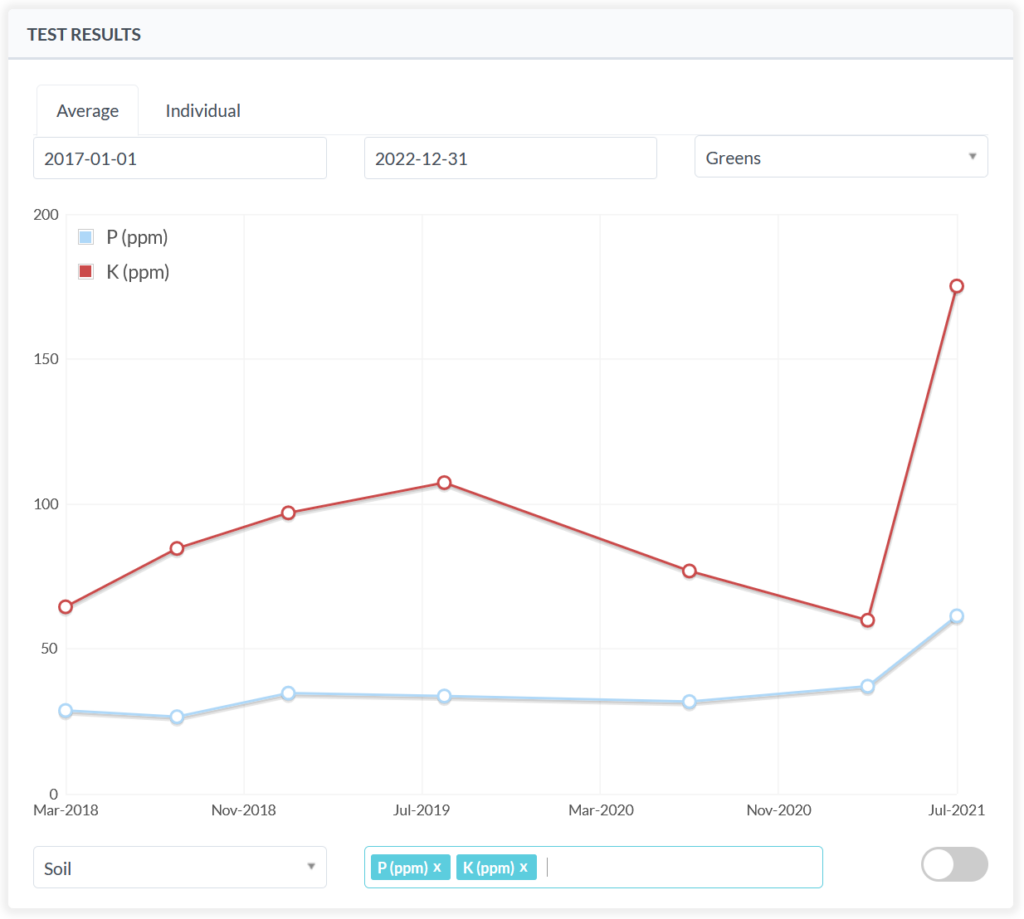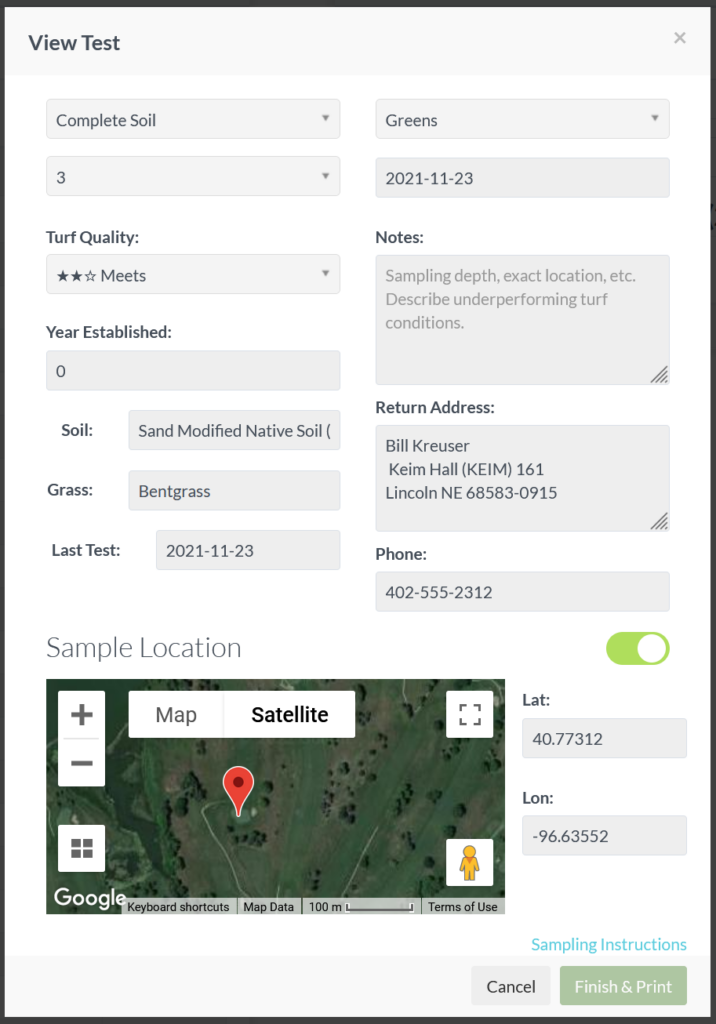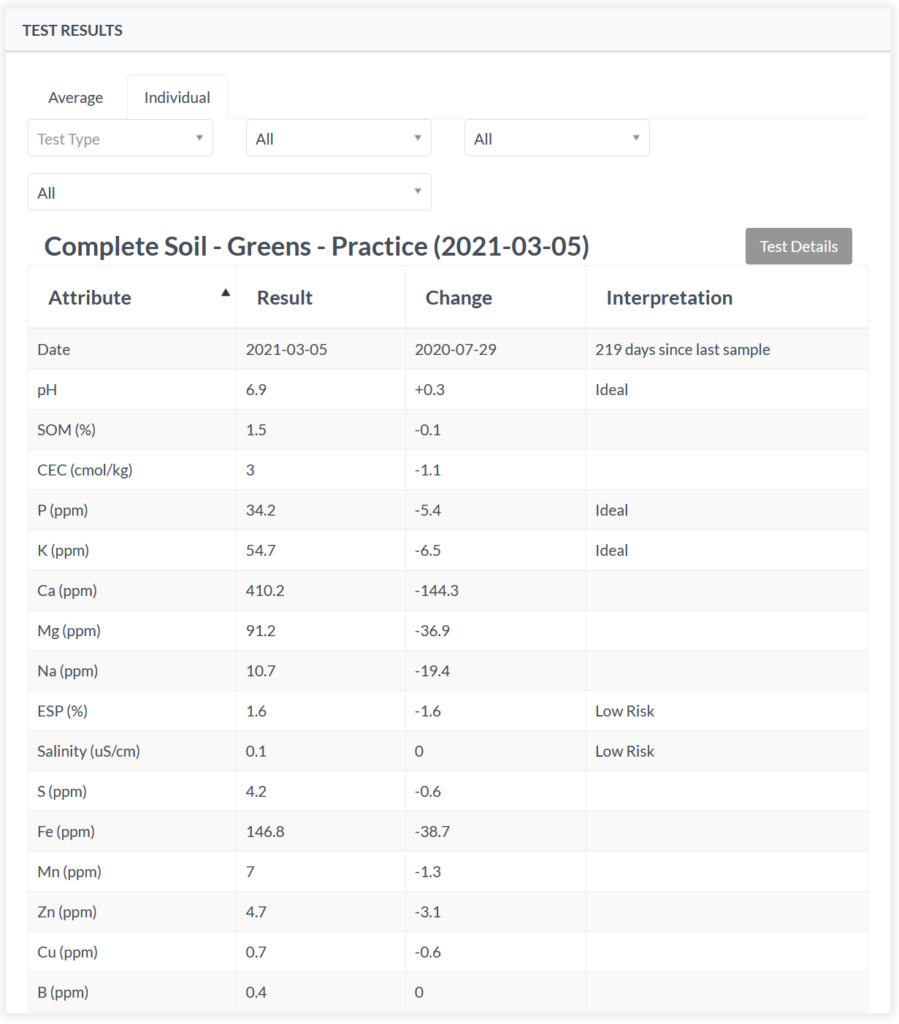Last spring, a handful of the research putting green plots at OJ Noer at the University of Wisconsin-Madison were showing some pretty impressive signs of phosphorus deficiency. The OJ Noer research facility gives us the opportunity to push grass to its limits. About ten years ago, Bill and I demonstrated that ‘A4’ creeping bentgrass grown on a non-amended sand showed signs of phosphorus deficiency between 5 and 7 ppm Mehlich-3. The current University of Wisconsin guideline for “low” soil P is 25 ppm Mehlich-3, and the PACE Turf MLSN guideline is 21 ppm Mehlich-3 for phosphorus. Soil testing guidelines tend to err on the conservative side, meaning that thresholds that are selected are typically above the true thresholds where a nutrient becomes limiting. This explains why I routinely am able to maintain my research greens at levels far below the MLSN or the University of Wisconsin soil testing guidelines for P, K, and other nutrients.

Soil testing guidelines are general, not site specific. A good analogy is with soil moisture management. In general, sand greens wilt around 10% soil moisture. Depending on the species or cultivar being grown, soil organic matter level, and the root depth, they might wilt at 7% or maybe 13%. We can say that ideal moisture targets are about 15-20% in the morning for most greens, but we also know that those wilt points and morning targets are specific to a course, and change from situation to situation at an individual course. You could use those guidelines I listed above, but it’s better for you to make your own observations and set your own guidelines based on the response of your turf and your goals for putting surface performance.

Just like you use a soil moisture probe and your observations to determine ideal soil moisture levels, you can use your eyes and a soil probe to determine the optimum soil P level at your property. Soil P deficiency symptoms are very visual and look somewhat like wilt. Grass with less than optimum tissue P will turn darker green and even purple. This effect is most noticeable in the spring. Complicating matters, however, is that some cultivars will turn purple in cold temperatures regardless of the plant’s phosphorus status. This effect is related to the reason deciduous tree leaves turn color in fall. It can’t be corrected with fertilizer applications, and the effect will go away as soil and air temperatures increase. However, large expanses of purple turf in the spring is a potential sign of phosphorus deficiency. When you observe such an effect, it’s best to grab soil samples from purple and non-purple areas and send them to a reputable soil testing lab for Mehlich-3 soil analysis. When the numbers come back, you should see slightly lower P levels in the purple turf, and higher soil P levels in the green turf. Keep your P levels around the result from the green turf and it should be smooth sailing.

I had the opportunity to practice what I’ve been preaching this spring when I observed large areas of purple grass on four different root zones. I sampled to a depth of three inches from the purple grass on each root zone, and then collected another sample to the same depth from green grass on that same root zone. These root zones were built at different times and had different cultivars of bentgrass. However, we observed broad similarities in the soil P levels underneath purple turf – ranging 4.0 ppm to 6.7 ppm. The lowest soil P level underneath green grass was 8 ppm, and the greatest was just under 20 ppm. These results show that keeping Mehlich-3 soil P > 7 ppm in the top three inches of a bentgrass green is not likely to show signs of phosphorus deficiency on a sand root zone. However, don’t take it from me, if you see a some purple bentgrass next spring, take a sample from purple and green areas and see if your results match mine.



It’s easy to obtain soil, tissue and water tests through GreenKeeper App. Create a new test entry, send the sample to our partner lab and receive the results in GreenKeeper only a few days later. Start a new test submission today by visiting the Course Test page at GreenKeeperApp.com.
